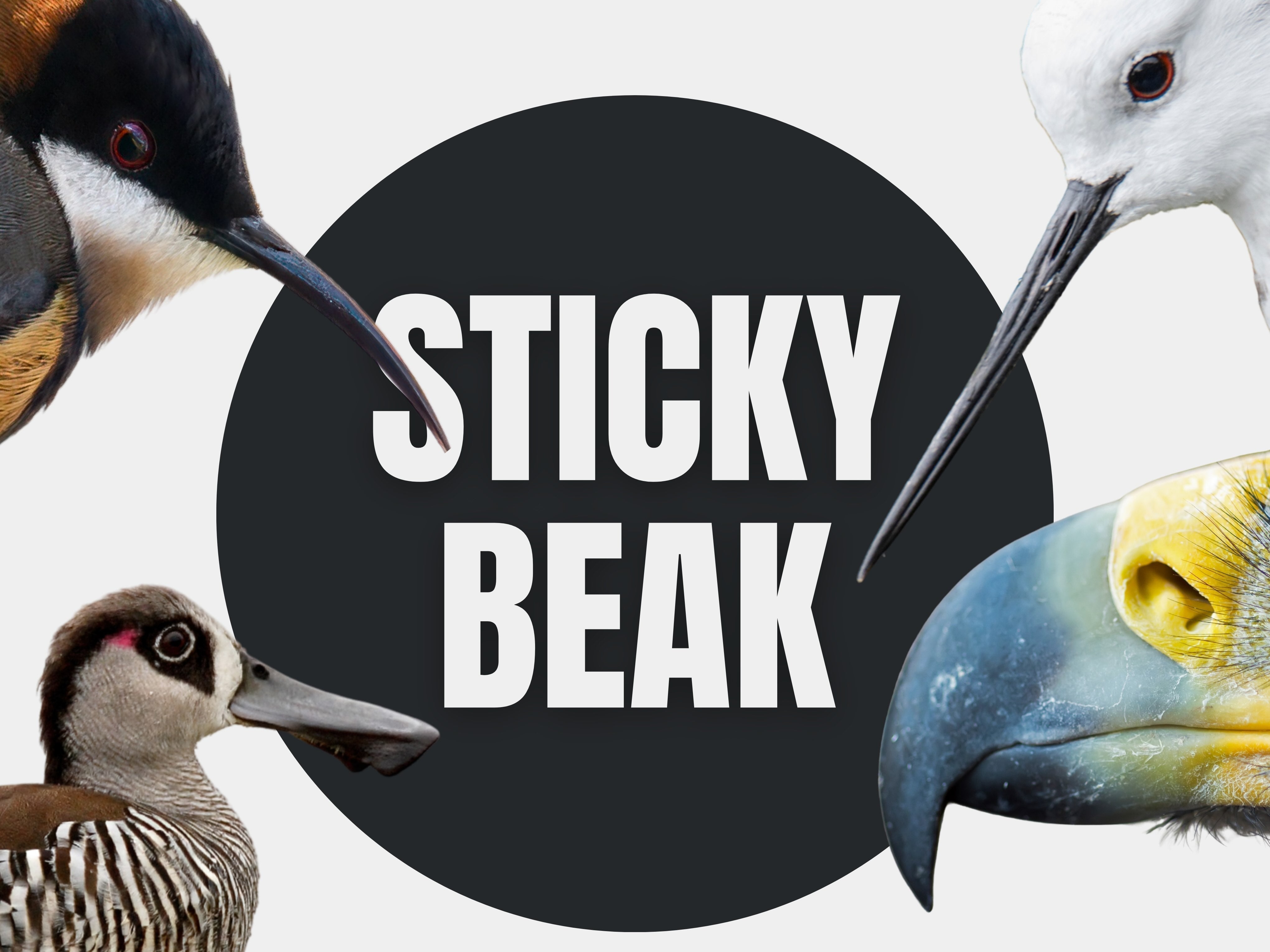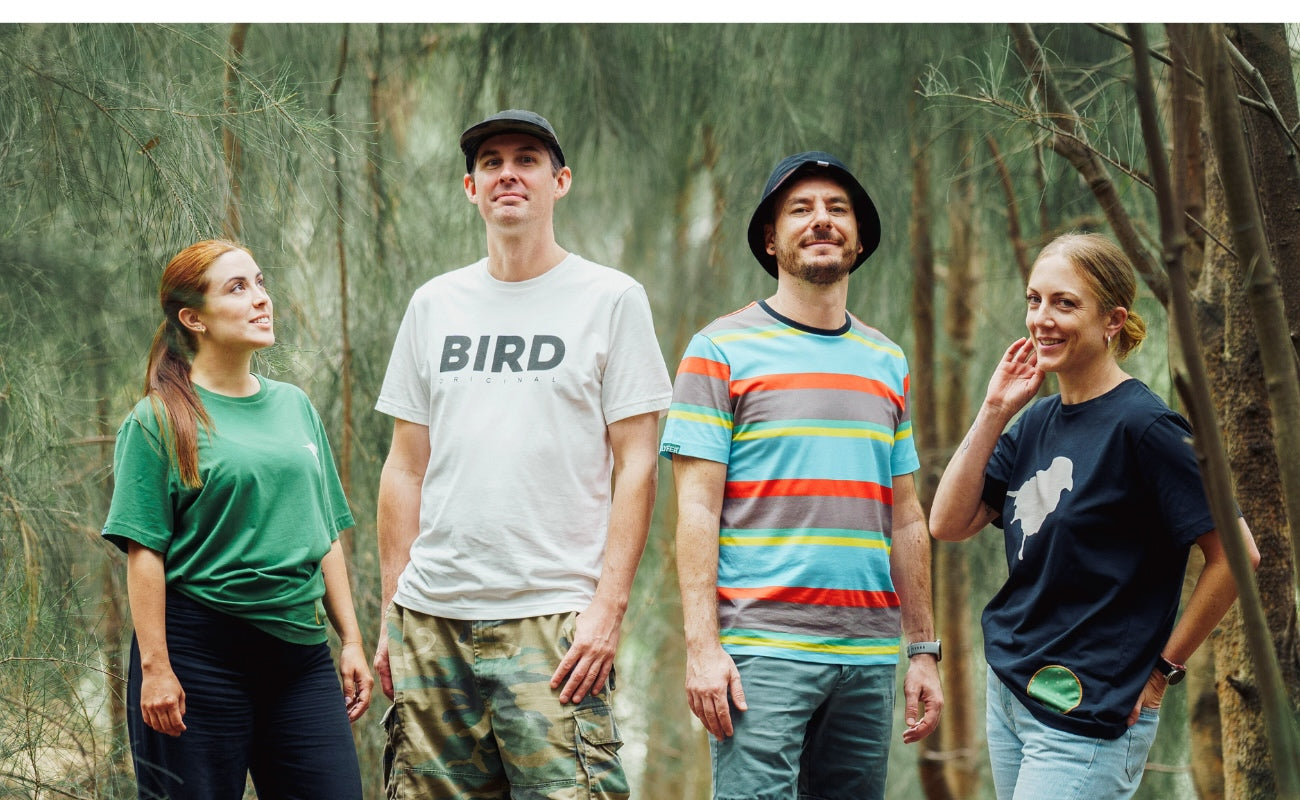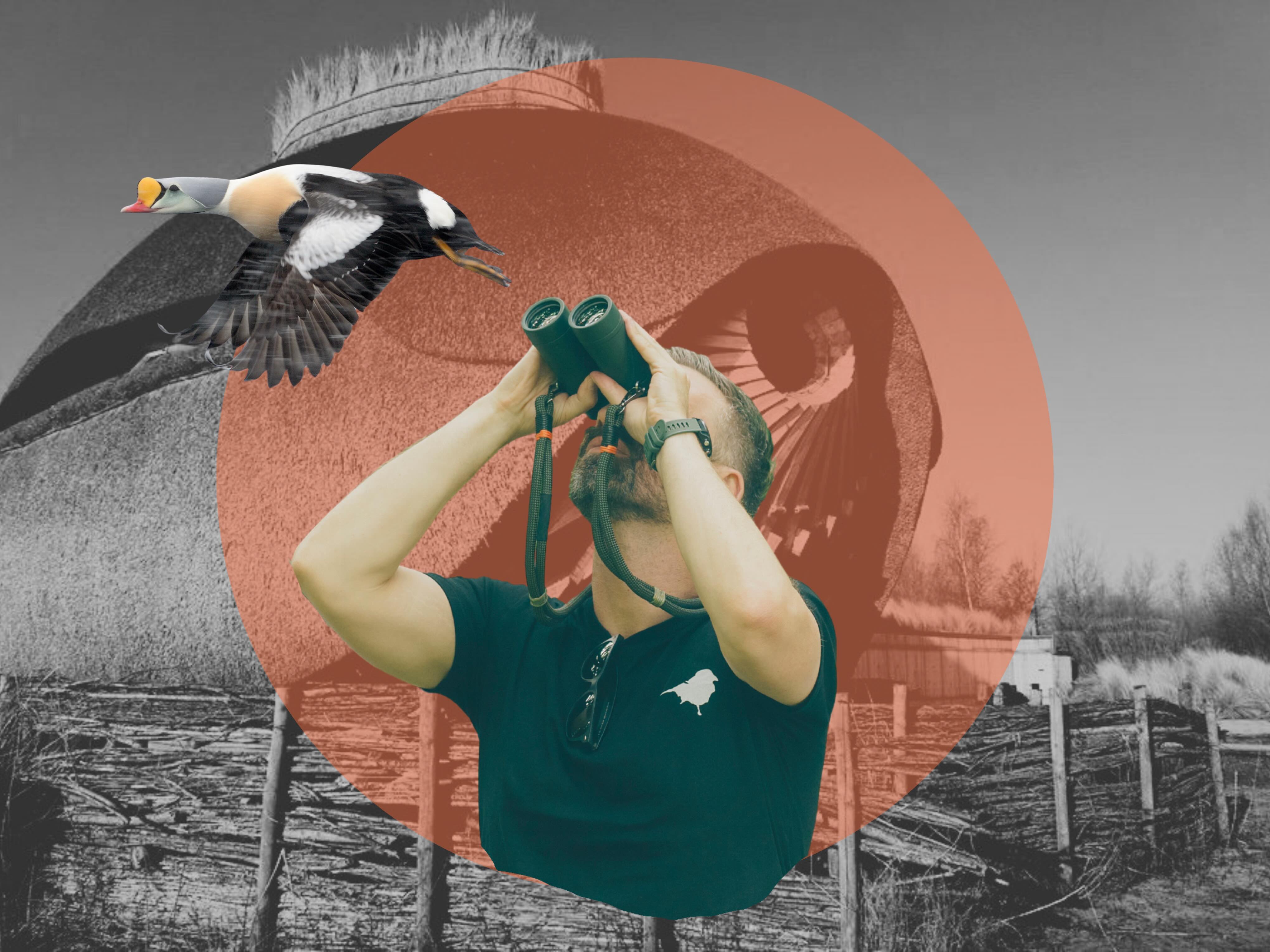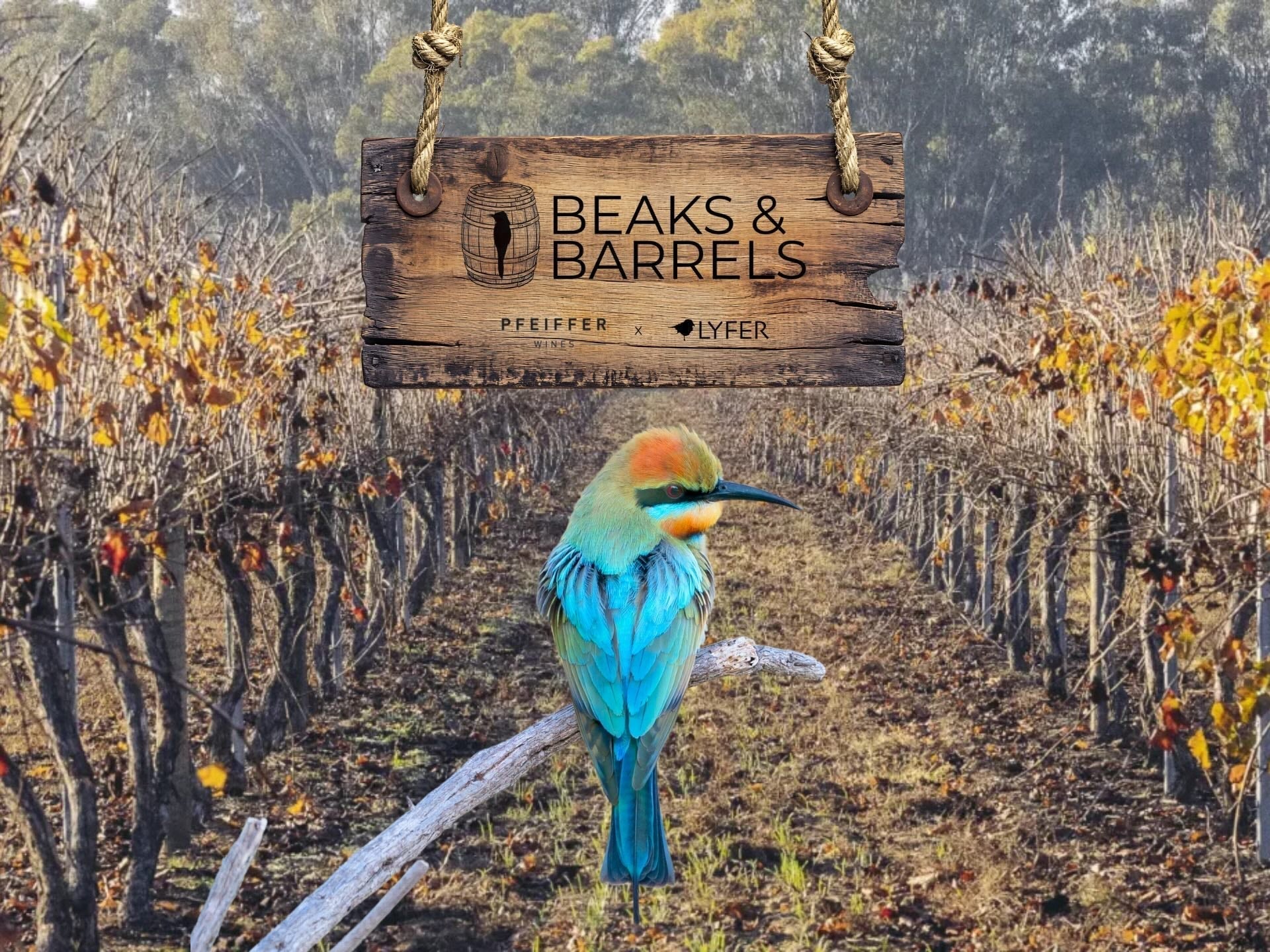
Sticky Beak: A Modern Birder’s Guide to Bills
[Estimated read: 8 minutes]
In Aussie slang, a “sticky beak” means poking your nose into something that’s not your business. Today, we’re kind of doing that, only our business is birds. We’re taking a sticky beak into beaks and bills, looking at how they came to be, what they say about the birds using them, and how they can help you nail an ID. There are plenty of beak shapes out there. We’ve picked the ones you’re most likely to come across, but we’ve also listed the rest. Worth a sticky beak into those too (alright, pun quota filled).
A bird’s beak (or bill) is more than just a face feature. It’s the result of millions of years of evolution, shaped by diet, habitat, and survival needs. And for us birders, learning to read a beak is one of the most useful ways to identify a bird, even when light or distance make plumage unreliable.
Let’s look at the main beak types you’ll see most often, how they evolved, and the surprising facts you can pull out on your next bird walk.

*Image courtesy of World of Birds
Conical: The Seed Crusher
Short, thick, and resilient, the conical beak evolved for maximum pecking force. Its strength comes from a broad base and short length, which reduces bending stress when cracking hard shells. Over many generations, seed-eating birds have evolved larger and more specialised jaw muscles that attach to their deep, broad beaks. This extra muscle mass increases bite force, allowing them to crack tougher seeds than birds with narrower bills, an evolutionary advantage in habitats where hard seeds are the main food source.
In Case of Pub Trivia:
Herrel et al. (2005, Functional Ecology) found that the Hawfinch can exert around 30–50 kilograms of force per square centimetre at the tip of its beak, easily enough to crack cherry stones and olive pits.
Here in Australia, the Double-barred Finch might not hit Hawfinch-level numbers, but its perfectly shaped cone bill makes short work of the hard grass seeds that keep other birds guessing.
Who Has One:
-
Australia: Double-barred Finch, Diamond Firetail, House Sparrow
-
International: Northern Cardinal, Common Chaffinch, Hawfinch


Hooked: The Tearer
What is curved, sharp, and built for precision? The hooked beak. It evolved alongside hunting and foraging strategies that demanded grip and control. Raptors use it to pierce, hold, and tear flesh, while parrots use their version to shred fruit, strip bark, and crack nuts.
In falcons, a small notch along the edge, called a tomial tooth, works like a built-in blade, allowing them to sever their prey. The evolution of this beak has helped reduce the struggle and energy cost of working for a meal.
In Case of Pub Trivia:
The Peregrine Falcon’s tomial tooth allows it to sever a bird’s spinal cord mid-hunt, often during a dive clocked at over 300 km/h, the fastest speed recorded in the animal kingdom. Watch this great little video here.
Here in Australia, the Powerful Owl’s broad, hooked bill and strong talons subdue large prey like possums, while the Rainbow Lorikeet’s curved tip and brush-tipped tongue make peeling fruit and flowers look effortless.
Who Has One:
-
Australia: Peregrine Falcon, Powerful Owl, Rainbow Lorikeet
-
International: Golden Eagle, Great Horned Owl, Scarlet Macaw


Probing: The Reacher
A long, slender and probing beak is all about precision. They’re designed to reach food that other birds can’t, whether it’s nectar hidden deep inside a flower or worms buried beneath layers of mud. Many shorebirds, like curlews and godwits, have sensory pits at the tip of the bill packed with pressure-sensitive cells.
These allow them to feel the slightest movement of prey hidden below the surface, even when they can’t see it. Nectar-feeders like hummingbirds evolved beaks shaped to match the flowers they visit, a classic example of co-evolution between bird and plant. It’s nuts.
In Case of Pub Trivia:
The Bar-tailed Godwit can probe up to 20 cm deep into mud without ever seeing its prey, guided entirely by touch. In Australia, the Eastern Curlew’s down-curved bill lets it reach sand-worms no other wader can access, while the Eastern Spinebill’s fine, curved bill is perfect for sipping nectar from tubular flowers. Watching one of these fine species busying itself around a juicy flower is a wonderful thing to watch.
Who Has One:
-
Australia: Eastern Curlew (EN), Red-necked Avocet, Eastern Spinebill
-
International: Bar-tailed Godwit (NT), Hummingbird, Long-billed Dowitcher (NT)


Chiselling: The Driller
The chisel-shaped beak evolved for feeding with impact. It allows birds to dig their way into wood, bark, or other hard surfaces in search of food. In woodpeckers, the beak tip is reinforced with microscopic fibres that prevent splitting, while their skulls are built with shock-absorbing structures to protect the brain.
Even in non-woodpecker species like kookaburras, a strong, straight beak is perfect for battering prey (it can be brutal to watch), breaking into insect nests, or prying bark to reveal hidden insects.
In Case of Pub Trivia:
A woodpecker can deliver up to 20 strikes per second without getting a headache, thanks to a spongy bone layer behind the beak that acts like built-in padding.
Who Has One:
-
Australia: Laughing Kookaburra, Black-faced Woodswallow, Noisy Miner
- International: Great Spotted Woodpecker, Brown-headed Nuthatch, Red-breasted Sapsucker


Sieving: The Strainer
Broad and flat with internal comb-like lamellae, these beaks act as natural filters. Birds with this design pull in water or mud, then push it back out, trapping food like algae, insects, and tiny crustaceans. The spacing of the lamellae works like a sieve, wide enough to let water and silt pass, but fine enough to keep the good stuff in. In flamingos, the whole beak is bent midway to make upside-down feeding more efficient.
In Case of Pub Trivia:
Flamingos feed upside down, using their bent bills and comb-like lamellae to filter out shrimp and algae. The Pink-eared Duck, that some of us nickname the “Zebra Duck” for its bold stripes, uses its broad, lamella-lined bill to sieve constantly in shallow pools. Watching these ducks glide by, you sometimes question if they ever stop feeding.
Who Has One:
-
Australia: Pink-eared Duck, Pacific Black Duck, Pied Stilt ( a personal favourite)
-
International: Greater Flamingo, Northern Shoveler, Common Eider


Pouch: The Scooper
The pouch evolved as an extension of the throat skin, supported by a flexible lower jaw. In pelicans, the large stretchy pouch under the beak works like a net and a colander combined, scooping up both fish and water, then tipping forward to drain the liquid before swallowing the catch.
Most Cormorants and Frigatebirds (actually pretty much of all of them) have throat pouches, though they use them for show, like the male Magnificent Frigatebird, which inflates its bright red pouch to impress females during courtship, or for carrying food, rather than fishing in bulk.
In Case of Pub Trivia:
The Australian Pelican’s pouch can stretch wide enough to fit a small dog (think, or maybe don't think…. a Jack Russell Terrier or a small Maltese).
Who Has One:
-
Australia: Australian Pelican, Little Black Cormorant, Australasian Darter
-
International: Brown Pelican, Magnificent Frigatebird, Dalmatian Pelican


And the ones we didn't get to:
-
Needle-like
-
Upturned
-
Down-curved
-
Spoon-shaped / Spatulate
-
Fish spear
-
Skimmer
-
Crossbill
-
Clam-cracker / Shell-crusher
-
Shearing
Every beak tells a story, of what a bird eats, how it lives, and the those crazy decisions that evolution made along the way. Next time you're out birding, try noticing the beak before the plumage. You might be surprised how quickly it narrows the ID list.
Also, we may have missed a few, so let us know in the comments below. If you’ve got a beak fact or a birding moment all about the beak, share it in the comments. We’re all sticky beaks at heart. ;)





Leave a comment
This site is protected by hCaptcha and the hCaptcha Privacy Policy and Terms of Service apply.